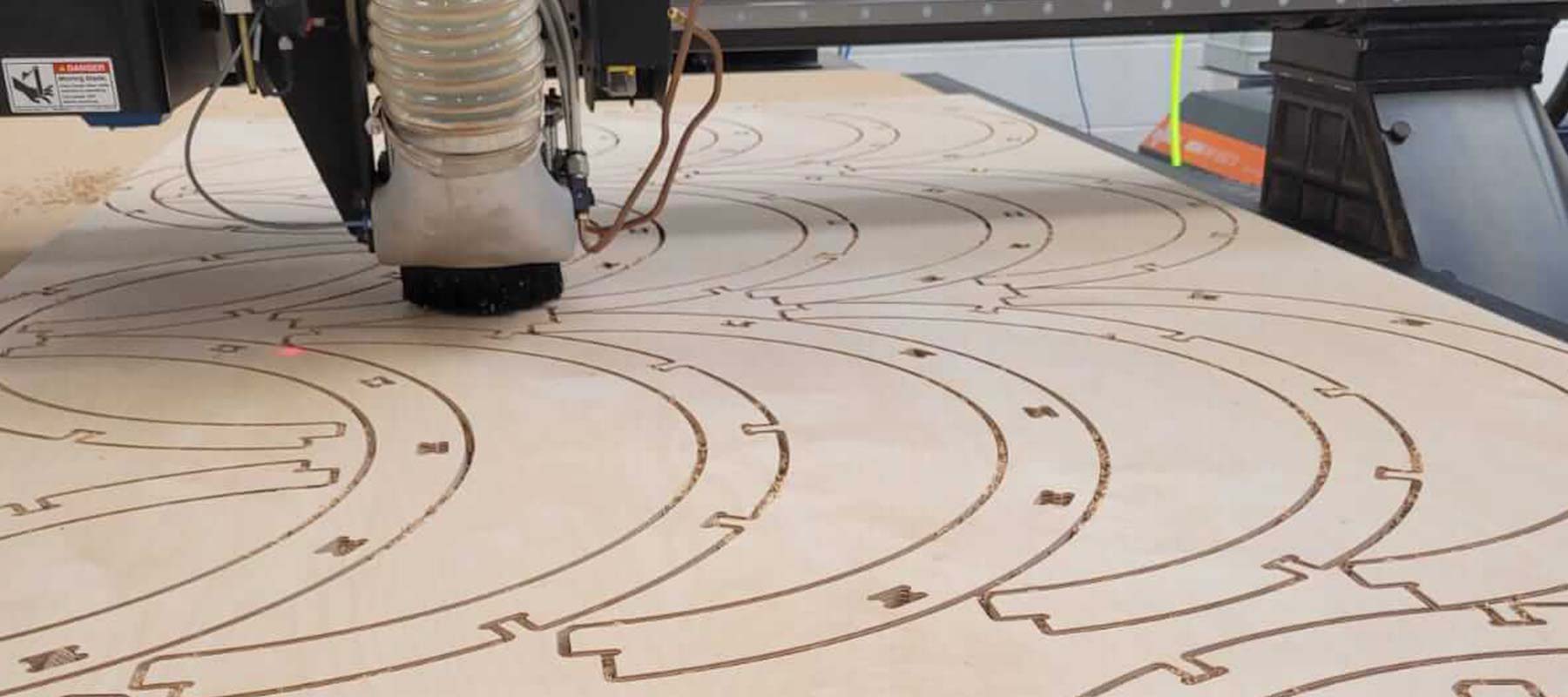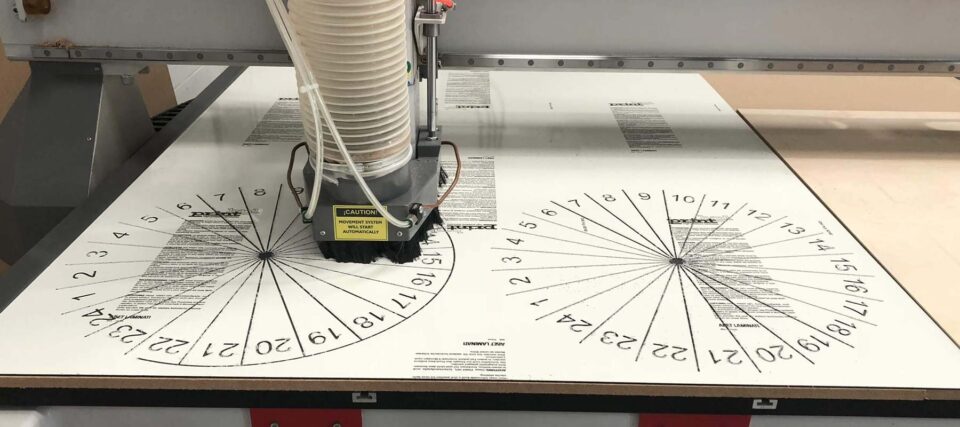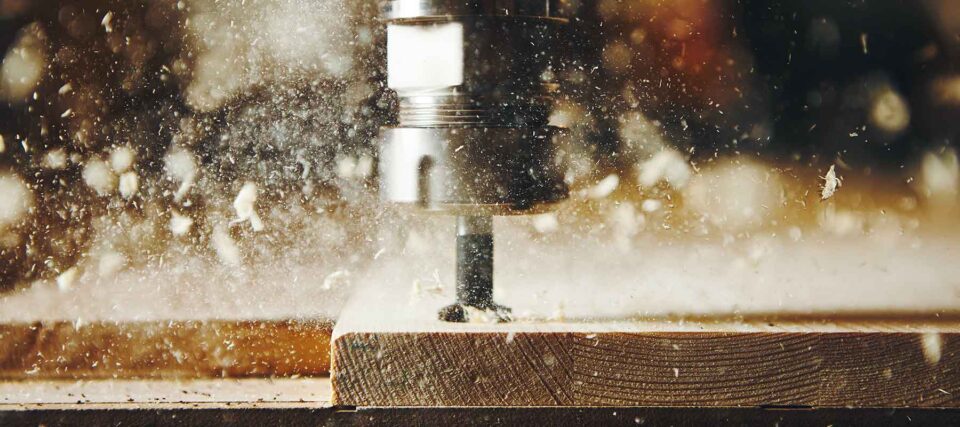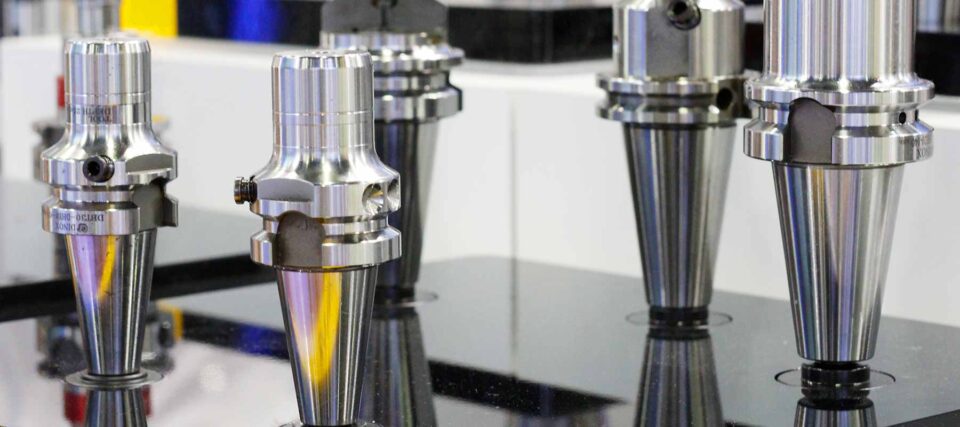Plywood is made up of thin layers of laminated ply (could be birch, bamboo, etc) glued and stacked on top of each other. This means that it has different properties to both ‘real’ wood and MDF and therefore needs to be treated as a separate material.
As with all materials there are different qualities of plywood – not only in the main material but in the glues which are used to bond these layers together. There are also soft and hard wood varieties so it’s important to know what you’re cutting before you begin!
Plywood is a commonly used material, it can withstand a lot of stress and exposure to the elements so is perfect for beams, crates and outdoor furniture. Another reason for plywood’s popularity is its price, it is much cheaper than ‘real’ wood. However, it can be difficult to get a smooth finish if you’re not used to working with it and no one wants frayed edges which need sanding.
Why do you get frayed edges with plywood?
Tear out is the rough splinters, or frayed edges, which stick out and result from cutting through the thin layers of laminated ply. This happens when you cut across the grain because the fibres want to move.
To cut Plywood all at once or not?
This really depends on the type of router you are using. If you have a hobbyist machine it goes without saying that you won’t be able to run your machine at the same speeds as an industrial CNC Router like the MultiCam Apex 1R or Apex 3R. Machines with a higher horse power spindle and larger motors would be able to cut plywood up to a certain thickness in one pass (again it’s hard to generalise and it really is down to the machine, tool, thickness and quality of the plywood – contact us for specific support). If you have a machine which doesn’t run at such high speeds, we would suggest making a few shallow passes before you begin cutting.
If you are using a machine which runs at a slower feed rate, we advocate applying painters tape to the cut surface (the stuff that peels off really easily) which keeps the fibres in place. As a note this shouldn’t be needed on a machine which runs at a higher horse power.
* We always advocate using a Feeds and Speeds Calculator before working on a new job but it is especially important before cutting Plywood if you want to achieve a good finish
Check your bit
Make sure it is clean and sharp – this really does apply to cutting anything but because plywood is a difficult material it’s even more important. Before each job you should also check the collet and nut to ensure they are in good working order and that the tool is far enough into the collet (at least 85% full). Also check to make sure there is no additional vibrations in the gantry which can cause more fraying and tool breakage.
Choose your bit wisely
Not all bits are created equally! When choosing a router tool for cutting plywood we would always recommend a compression tool which will give you a smooth top and bottom finish. For the ultimate finish we also recommend choosing a chipbreaker tool like the Vortex 3400 series which is staggered on each flute to create a smooth cut when working with plywood. The notches in the flutes break down the plywood into smaller pieces so that the tool doesn’t have to work as hard and therefore should last longer.
Conclusion
To avoid the frayed edges and get the cleanest of finishes in your plywood you need to choose your CNC tool wisely, check your equipment and take your time. For more in depth advice contact our customer services team on 01329 246070 or on the contact us form here.




